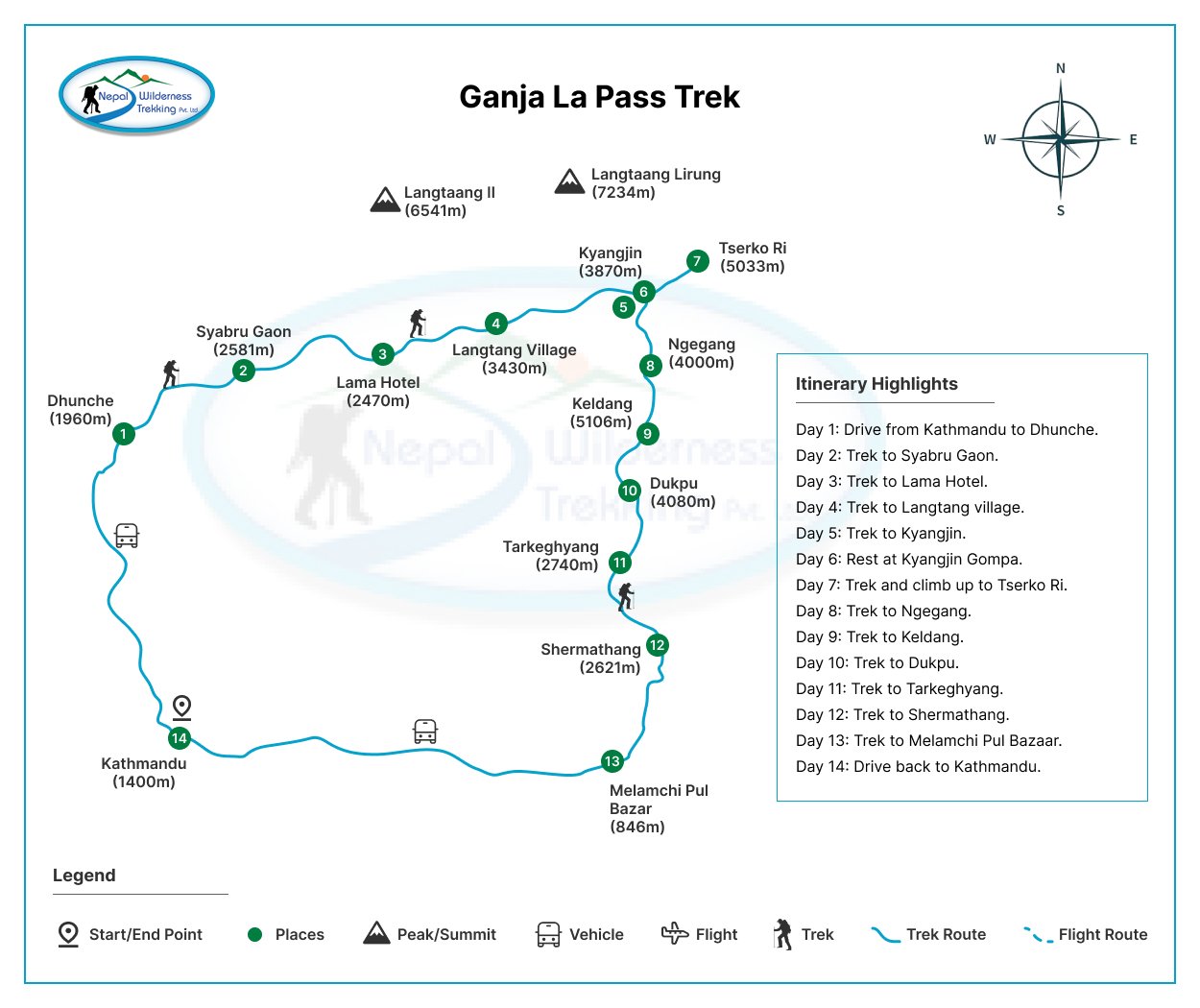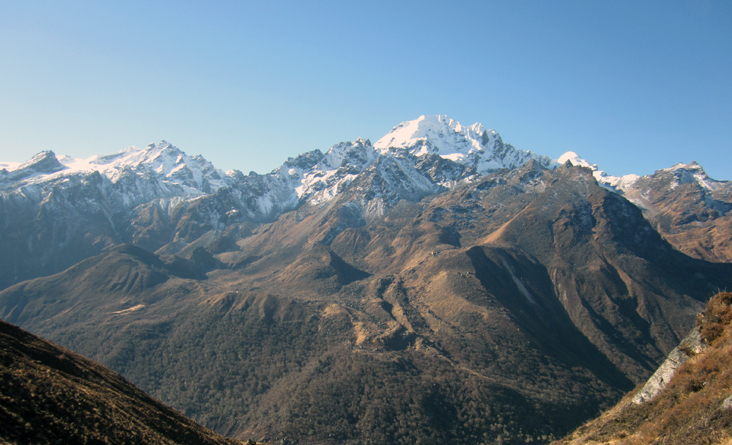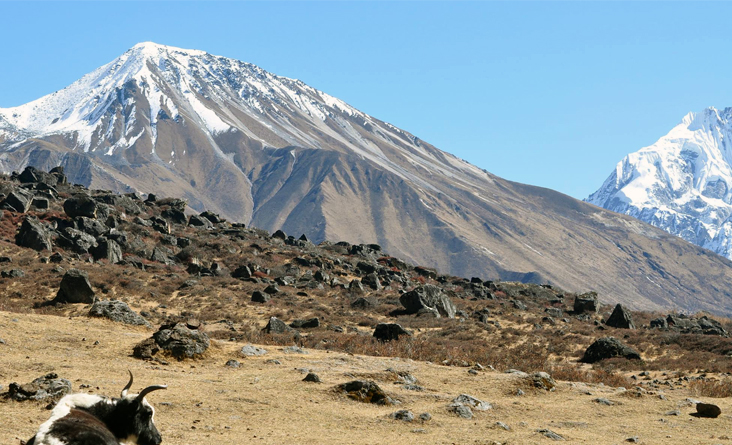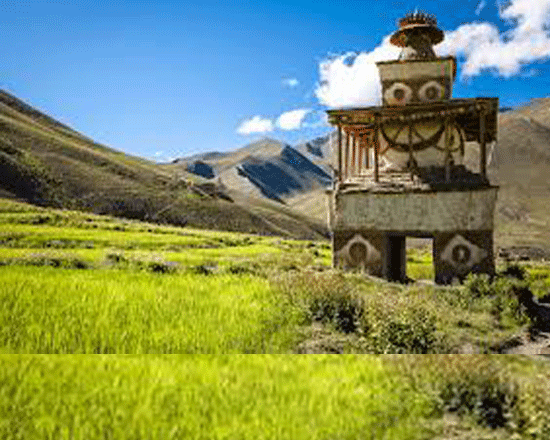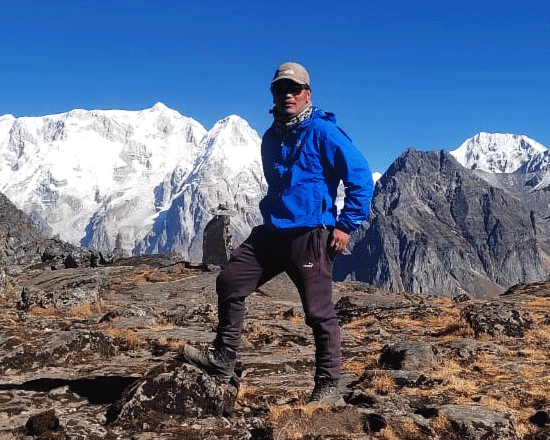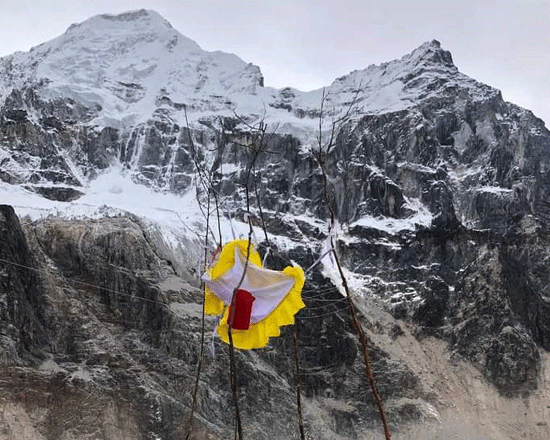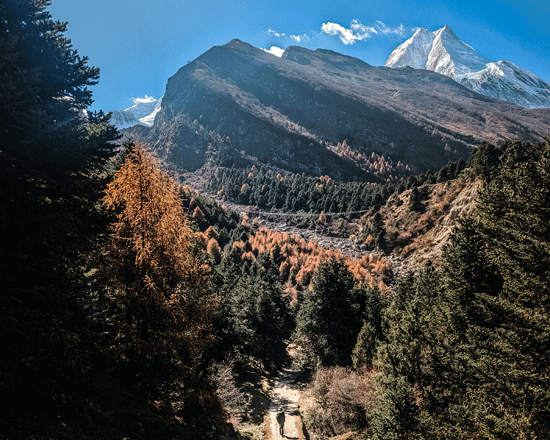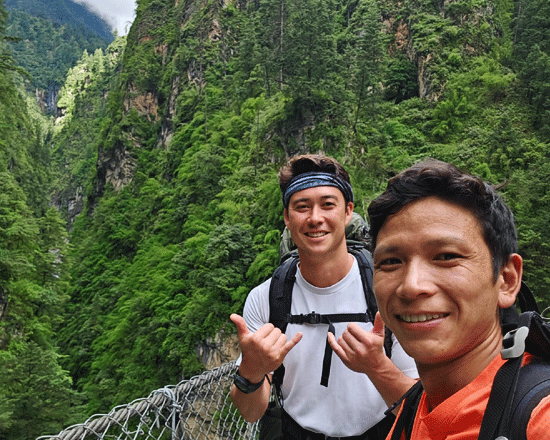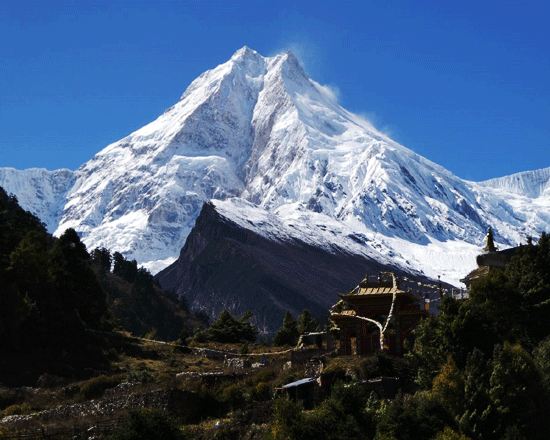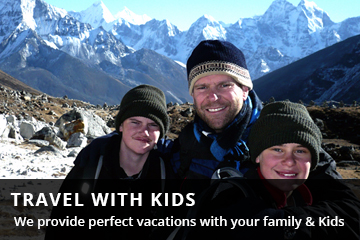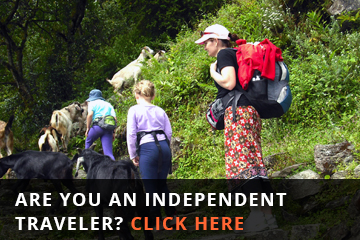Ganja la Pass Trek
Ganja la Pass Trek
Wilderness TrekkingTrip Facts
Since the terrain can be hard and the days long, hikers on these treks should be in good physical condition and have some previous mountain walking experience. Steep climbing may be involved, although it is never necessary to use ropes. Treks at this level can he arranged for periods of 16 to 21 days. Typically, a gradual ascent through a green river valley will lead you up to a number of high passes, where you will reach the altitude of 5416m. Often times, you will get a close insight into the Tibetan culture. Participants should expect to trek above 5416m/17872ft.
Mode of Travel : Land100%
Overview
Ganja la Pass trek 14 days Itinerary
The Ganja La Pass Trek offers a challenging and exhilarating trekking route in the Langtang region of Nepal. This trek showcases breathtaking mountain scenery, hidden villages, and a high mountain pass that provides a thrilling adventure. Experienced trekkers seeking a less-crowded and more adventurous trail in Nepal are highly recommended for the trek.
The Ganja La Pass Trek, nestled near the Tamang heritage culture trails, takes adventurers through the upper realm of Naya Khang Peak, earning its reputation as one of the most demanding passages in the Langtang and Helambu regions. This expedition typically unfolds over 12-14 days, commencing in the attractive village of Syabrubesi. Following the revered Langtang Valley Trek route, the journey progresses until reaching the serene of Kyanjin Gompa. Then the path diverges, leading intrepid hikers toward the majestic Ganja La Pass, which stands at 5,122 meters. In the middle of thin air, awe-inspiring panoramas of the Langtang Himalayas, graced by the majestic presence of Langtang Lirung, Dorje Lakpa, and Ganesh Himal, present themselves to trekkers.
After crossing Ganja La Pass, The Trek descends into the picturesque Helambu region, passing through remote Sherpa villages and enchanting rhododendron forests. Notable highlights of the Ganja La Pass trek include traversing the Ganja La Pass, visiting the sacred lakes of Keldang and Dudh Kunda, and exploring the traditional villages of Tarke Gyang and Sermathang.
The highlight of Ganja La Trek
To ensure a safe and enjoyable Ganja La trek, it is crucial to choose the right time for the Ganja La Pass hike. It’s important to note that the pass has narrow and challenging trails, including a precarious mountain cliff that requires the use of 50 to 60-meter ropes for navigation. With an altitude of 5,122 meters, Ganja La Pass demands good physical fitness and prior experience with high-altitude trekking. Therefore, it is highly recommended to have an experienced guide and porter accompany you on the trek.
The Ganja La Pass trek takes you through the Langtang National Park, covering an area of approximately 1,770 square miles. The park boasts a rich biodiversity, with around one thousand plant species, 160 bird species, and 30 mammal species. The Langtang Valley is especially renowned for its blooming wildflowers during the summer and spring seasons.
The Ganja La Pass trek itinerary starts with a bus ride from Betrawati Kalikasthan, gradually ascending to Dhunche. As you ascend from Ghora Tabela, the Langtang valley unfolds, showcasing Tamang villages along the way. Kyanjin Gompa, famous for its yak cheese factory, serves as the starting point for the Ganja La Pass section of the trek. During this part, you will be camping for four nights and five days, with all necessary equipment and support staff, including tents, cooks, food, porters, and Sherpas. Any trekkers seeking more adventure can hike to the pass trek where Kongmala Pass the highest pass among the three passes serves as the most challenging trek in the Everest region.
Acclimatization
Challenges and Risks
Difficult Terrain: Trekkers recognize the trek to Ganja La Pass for its difficulty, with steep ascents, rugged terrain, and potentially treacherous weather conditions. You need good physical fitness and proper acclimatization to avoid altitude sickness.
Seasonal Accessibility: Authorities often close the pass during the winter months due to heavy snowfall and adverse weather conditions. The best time to trek is during the spring (March to June) and autumn (September to December) when the weather is more stable.
Recent Developments
Post-Earthquake Reconstruction: The 2015 earthquake in Nepal significantly impacted the Langtang region, causing loss of life and damage to infrastructure. Reconstruction efforts have been ongoing to restore the area’s trekking routes and support the local communities.
Ganja La Pass remains a testament to Nepal’s rich trekking heritage and the resilience of its communities, offering a unique and challenging adventure for those who venture into its rugged landscapes.
Summary
In summary, the Ganja La Pass Trek offers an exciting and rewarding adventure, featuring breathtaking mountain views, hidden villages, and a challenging high mountain pass. With proper preparation, experienced guides, and adherence to safety protocols, this trek promises a memorable and exhilarating experience in the Langtang region of Nepal.
Nepal Wilderness Trekking provides Ganja La Pass Trekking services, including camping gear and nutritious meals at various stops throughout the journey. Our team of expert guides and porters possesses in-depth knowledge of the local communities, history, and culture, ensuring an enriching experience for trekkers.
In terms of telecommunication during the trek, you can purchase Ncell SIM cards in Kathmandu. Which can be helpful in Dhunche, Syabru, Gatlang, Goljung, and Bamboo Hotel within the Langtang Ganja La trekking area. However, please note that Langtang and Kyanjin Gompas, as well as three Lamas along the Ganja La Pass, lack reception. Additionally, while the coverage is generally reliable in the aforementioned locations, there may still be occasional signal interruptions due to the remote terrain. Therefore, it is advisable to inform someone about your trekking plans and expected itinerary beforehand.
Physical fitness preparation
What’s crucial is a willingness to prepare physically and mentally, and to respect the demands of the environment. It is recommended to take a walk a few hours a day for a month to maintain your stamina during the trek. This preparation helps in acclimatizing to the high altitudes and ensures you are ready for the demanding terrain of the trek, including the challenging ascent. Proper acclimatization ensures trekkers can fully enjoy the journey, absorbing the breathtaking landscapes and immersing themselves in the local culture. Ensure that, you bring the recommended trekking equipment list. Remember, quality trekking equipment can make your trip enjoyable, while a poor one can make it miserable.
Note
All published dates are guaranteed departures. If these dates don’t match your travel plans, we are happy to create a trip for your desired dates. Let us know what kind of trip you are looking for, and we will help make your dream destination a reality.
Detail Itinerary
- Day 01: Drive from Kathmandu to Dhunche (1966m.) which takes about eight hours driving. You head north out of Kathmandu driving through scenic foothills and ridgeline vistas to Dhunche. The first part of your drive up to Trishuli Bazaar is quite smooth. The path now moves along the gravel road. During the rainy season, the way it could be blocked sometimes due to landslides. Your drive from Kathmandu to the destination is to be made by either a local bus or land cruiser.
- Day 02: Trek from Dhunche to Syabru Gaon (2581m.) which takes about five and a half hours. Trek to Syabru Gaon (6950ft, 2120m). The trek today is very leisurely through forests and terraced hill slopes. As you enter Syabru, you descend to the ridgeline that separates the Langtang Khola from the Trisuli River. Syabru is a beautiful village stretched out along the ridgeline. You will continue through the town to your campsite about fifteen minutes beyond on the slopes below the village. The sunset is spectacular; brilliantly backlighting the houses perched on the ridgeline above. From here you can enjoy the panoramic view of Langtang Lirung (7245m.), Tibetan Himal ranges, and so on.
- Day 03: Trek from Syabru Gaon to Lama Hotel (2470m.) and it takes about five hours. The trail descends along the ridge on Syabru main street and then drops to the Ghopche Khola (2050 m.) and again descends to the Landslide (1810m.). Afterward, your trek ascends gently to Rimche (2400m.) through Bamboo (1960m.) and at the end, your trail is level to the Lama Hotel. En route, you could see red pandas, monkeys, and bears if you are lucky. There are few lodges and shops which provide trekker supplies.
- Day 04: Trek from Lama Hotel to Langtang village (3430m.) via Ghore Tabela which takes about six hours. As you continue climbing there are occasional glimpses of Langtang Lirung between the trees. At Ghora Tabela [3000m], the trail emerges from the forest. While walking here, you can catch a glimpse of white monkeys and local birds. Once there was a Tibetan resettlement project here, but now it is a Nepalese army post though it has no permanent inhabitants. The trail continues to climb gently, and the valley widens, passing a few temporary settlements used by herders who bring their livestock to graze in the high pastures during the summer months. There is a monastery that we can visit shortly before arriving at the village of Langtang, the headquarters of the Langtang National Park. The houses of Langtang and its neighboring communities are of the flat-roofed Tibetan style, surrounded by stone walls enclosing fields of buckwheat, potatoes, wheat, turnips, and barley.
- Day 05: Trek from Langtang Village to Kyangjin(3870m.) which takes about three hours. The trail climbs gradually through small villages and yak pastures as the valley opens out further and the views become more extensive, After crossing several small streams and moraines, the trail reaches the settlement at Kyangjin. Here there is a small monastery and a government-operated cheese factory. We should arrive at Kyangjin by lunchtime allowing time to acclimatize and explore the area. It is a dramatic setting, with snow-covered peaks surrounding us in all directions. At this point, you can enjoy the panoramic view of Dorje Larpa (6990m.), Langtang Ri (6370m.), Langtang Lirung (7245m.), and so on.
- Day 06: Rest at Kyangjin Gompa for an excursion, hike up to Langtang glaciers, and back to Kyangjin Gompa A day to rest and explore the area. You can visit the monastery and the cheese factory, walk up the moraine to see the spectacular ice faces and tumbling glaciers of Langtang Lirung, or ascend Kyangjin Ri [4350m], directly behind the village, for a breath-taking panorama of the Langtang peaks.
- Day 07: Trek and climb up to Tserko Ri (5033m.) which takes about 5 hours to see the outstanding views of surrounding peaks and back to Kyangin Gompa
- Day 08: Trek Kyanjing Gompa to Ngegang(4000m.) which takes about 5 hours. There you can not see any villages. The trail goes on an ascending area covered with little natural vegetation. Since there are available no lodges, you need to camp.
- Day 09: Trek Ngegang to Keldang (5106m.) via Ganja La (5100m.) which takes about 5 hours. This day is comparatively strenuous as you need to cross the Ganja La pass. On the Ganja La pass, you can find it covered with snowy ice most of the time throughout the year. You need to camp.
- Day 10: Trek Keldang to Dukpu(4080m.) which takes about 5 and a half hours. Your camping site will be inside the forest. This day will be a long day walking along the ridge, grassland, and very silent, well-camping views of the Mountains.
- Day 11: Trek Dukpu to Tarkeghyang( 2740m.) The trail descends about 200 meters and climbs the 4100m pass. Views from Pass are spectacular to the Annapurna Region and Mt. Everest region too. From the pass, the trail descends through pine forest, rhododendron forest past tiny herder's settlement to Tarkeghyang. You can visit one of the oldest Buddhist monasteries and Sherpa villages. These villages were friendly and cheerful-natured people inhabit.
- Day 12: Trek from Tarkeghyang to Shermathang (2621m.) which takes about four hours. This day the trail is quite more accessible through the flat land with beautiful forests on the way. You trek on crossing some small streams on the road. There is situated a charming village on the halfway to Shermathang. To add to your joy, Shermathang is another pretty Sherpa village where you can visit many ancient monasteries. There you can see the Jugal Himal range at the north face of Shermathang village.
- Day 13: Trek from Shermathang to Melamchi Pul Bazaar (846m.) and it takes approximately two hours. The trail gradually descends to Melamchi Pul Bazaar through meadows and cultivated fields. On the way, you come across several old villages with their particular tradition. Walking this day is quite pleasant with mountain views and interaction with local and friendly people.
- Day 14: Drive from Melamchi Pul Bazaar to Kathmandu which takes about six hours. You travel through gravel and the Bumpy path up to Lamidanda, and then you follow the pitched road up to Kathmandu.
Cost Included
- Hotel to the bus park by taxi.
- Kathmandu to Dhunche by public bus.
- Lodge accommodation on the way during your trek, and Camping.
- Meals three times a day (Breakfast, lunch, and dinner).
- Tea and coffee three times a day in a cup during the camping only.
- Langtang National Park entrance permit and TIMS card.
- Two-person tent, kitchen tent, dining tent, Toilet Tent.
- 50m rope for a pass.
- One fluent English speaking, the government registered, experienced, first aid trained guide, one cook, Sherpa, and required porters.
- Trekking Equipment sleeping bags and down jackets kid Bags.
- Guides/ cook, Sherpa, porters - food, lodge, bus transportation, salary, insurance, equipment, etc.
Cost Excluded
- Hotel in Kathmandu
- All meals like Lunch dinner and breakfast while in Kathmandu and Hard and soft table drinks such as coke, beer, Mineral water, hot shower, and boiled water during your trek
- all beverages during the tea house
- Personal insurance can cover helicopter Rescue and tips for Nepali staff.
- Excluded are all costs and expenses not listed under "cost includes"
- Inclusion of costs or delays beyond the control of the management, such as landslides, weather conditions, itinerary modifications due to safety concerns, illness, changes in government policies, strikes, etc.
Trip Map
